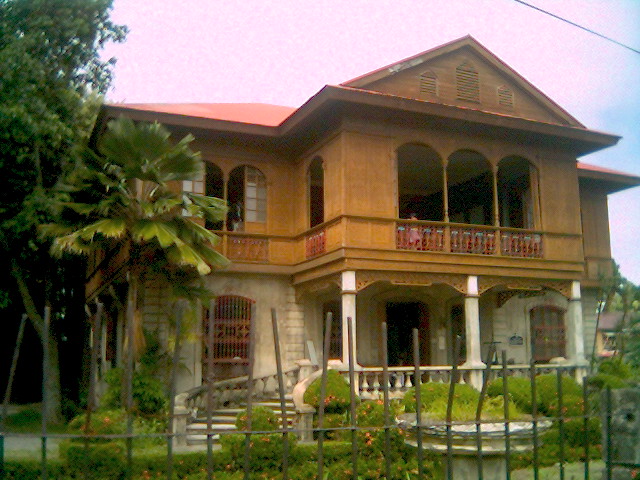- Balay Negrense
Infobox Museum
name = Balay Negrense
imagesize = 200
map_type =
map_caption =
latitude =
longitude =
established =October 6 ,1990 cite web | last = | first = | title =Negros Cultural Foundation:History | url=http://www.balaynegrense.com/NCFHistory.html | accessdate = 2008-06-26]
dissolved =
location = Cinco de Noviembre Street,Silay City ,Negros Occidental ,Philippines
type =lifestyle museum
visitors =
director = Maida Jison
curator =
publictransit =pedicab from any point in the city
website = [http://www.balaynegrense.com www.balaynegrense.com]The Balay Negrense (Hiligaynon, "Negrense House") is a museum in
Silay City ,Negros Occidental in thePhilippines , showcasing thelifestyle of a late 19th-century Negrense sugar baron. It is notable for being the first museum to be established in the province of Negros Occidental.History
The Balay Negrense was originally the ancestral house of Victor F. Gaston, a son of
Yves Leopold Germain Gaston and Prudencia Fernandez. The elder Gaston is credited as one of the pioneers ofsugarcane cultivation in this portion of the Philippine archipelago. A native ofNormandy inFrance , he married aFilipina fromBatangas where he initially began experimenting with sugar production before relocating to Negros.Built in
1897 ,cite web | last = | first = | title =Balay Negrense | url=http://www.ateneo.edu/offices/mirlab/panublion/r6_silbalay.html | accessdate = 2008-06-26] the structure housed Victor Gaston and his twelve children from 1901 until his death in 1927. Left unused by the family, the structure was abandoned in the mid-1970s and fell into disrepair until a group of concerned Negrenses formed what would later become theNegros Cultural Foundation and managed to acquire the house from the heirs of Gaston through a donation. With donations from prominent individuals and later the Department of Tourism, the structure was repaired and furnished with period furniture and fixtures. The museum was officially inaugurated onOctober 6 ,1990 .Architecture
The house is of the type called "bahay na bato", literally "house of stone", however, reflecting American colonial influences, the lower
storey is not constructed of stone but ofconcrete . The foundation posts are made out of trunks of the "balayong" tree, a localhardwood ; the floorboards are of the same material. The house's upper storey is constructed of wood topped with a roof of galvanized iron instead of tile.The house has a four-meter high ceiling and large windows with "ventanillas", smaller windows beneath the large windows with sliding panels that can be opened to admit the wind. The lower storey itself is elevated from ground level by a meter-high crawlspace, allowing the wooden foundations to be aired, preventing dampness from rotting the wood.
ee also
*
Yves Leopold Germain Gaston
*Mariano Ramos Ancestral House References
Wikimedia Foundation. 2010.
